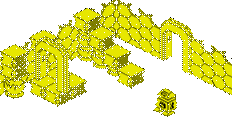Rejuvenated 3DS Could Provide a Home for Mid-Tier Games, 20th February 2012 (1up.com)
3DS surpasses 5 million units sold in Japan in record time as Seaman 3DS is rumored.
In what can only be described as a remarkable turnaround, the 3DS has gone from struggling badly enough that it necessitated a steep price drop to breaking a record by reaching 5 million units sold in Japan faster than any other platform. It took 52 weeks to reach that milestone, compared with 56 weeks for the original DS and 58 weeks for the Game Boy Advance before it.
It wasn't all that long ago that much of the talk about 3DS centered about how it was a doomed platform, one destined for failure because it was designed for a market that no longer exists in the size it once did. There were legitimate concerns to be voiced, as platforms like the iPhone and iPad have arguably taken a bite out of the handheld gaming market, but pronouncements of the platform's death before it could even reach the holiday shopping season or see the release of its first big games (Super Mario 3D Land, Mario Kart 7, and Monster Hunter 3G) were clearly premature. Reaching 5 million units sold in Japan is no guarantee the system will continue to sell this well moving forward; it is, however, an encouraging sign for Nintendo, Sony, and third-party developers to see there is demand for portable gaming systems provided the price is right and desirable software is available.
Additionally, Japanese publication Nikkei (as translated by Andriasang) is reporting Seaman is to be revived for release on 3DS. As random as that may sound to you, a release of the Dreamcast classic was hinted at in 2010 when designer Yoot Saito tweeted about his interest in seeing a 3DS version released. The game saw players interacting with a virtual pet -- a fish with a human head being the most common form -- through the use of a microphone. The Seaman would need to be fed and spoken to on a regular basis, and if it wasn't attended to daily it could die. Suffice it to say, it was a weird, unique game that doesn't exactly hold the potential to sell as well as Mario or Call of Duty.
Seaman could fall in the category of what you might call mid-range or mid-tier games, a rapidly disappearing market losing ground to massive, AAA games (like the aforementioned Call of Duty) and smaller, indie titles (VVVVVV, for example). It was around this time last year when Epic's Cliff Bleszinski suggested "the middle class game is dead," comparing games to the film industry where it's the blockbusters and indie films that do well in theaters, not the stuff in between.
While they are certainly in decline, I don't think the market for mid-tier games is dead. In fact, as long as 3DS sales don't begin to peter out (in addition to the 5 million sold in Japan, 3DS sales are over 4 million in the U.S.) Nintendo's latest handheld seems to present the perfect opportunity for these titles to succeed. Nintendo seems to realize this, as Nikkei reports the company is looking to revive other publisher's games on 3DS, with Seaman being just one example.
Pricing is one key element when it comes to selling mid-tier games. Publishers typically can't sell them for $10, and pricing them at $60 against the Skyrims or Modern Warfare 3s is a death sentence. Yet discounting such a game to, say, $40 on consoles can bring with it a negative connotation that the game simply isn't any good. This isn't always the case (Deadly Premonition was good, cheap, and sold quite well, whereas MX vs. ATV Alive was mediocre and sold accordingly), although in the portable market it's less of a problem: a new 3DS game being priced at $20 or $30 is less likely to make people question its quality than a $40 Xbox 360 or PlayStation 3 game.
There is also a much different expectation when it comes to the visual quality of a 3DS game. Graphics are not everything, but there is a certain level of expectation about how good a retail game will look on an HD console. An ugly 360/PS3 game that wouldn't look out of place on the PS2 generation of hardware is off-putting. 3DS, on the other hand, is capable of powering good-looking games -- just look at Resident Evil: Revelations -- but overall the bar is not as high as on consoles or even Vita. That makes it easier to create a game on a more limited budget, as is often the case when developing mid-range titles.
Many publishers may decide to follow the lead of companies like Activision and continue to focus on higher-margin games at the expense of the mid-tier stuff. But with 3DS thriving right now and console development sure to become even more expensive as the next generation of hardware approaches, the opportunity is there to embrace the middle space in a way it has not been in recent years.









